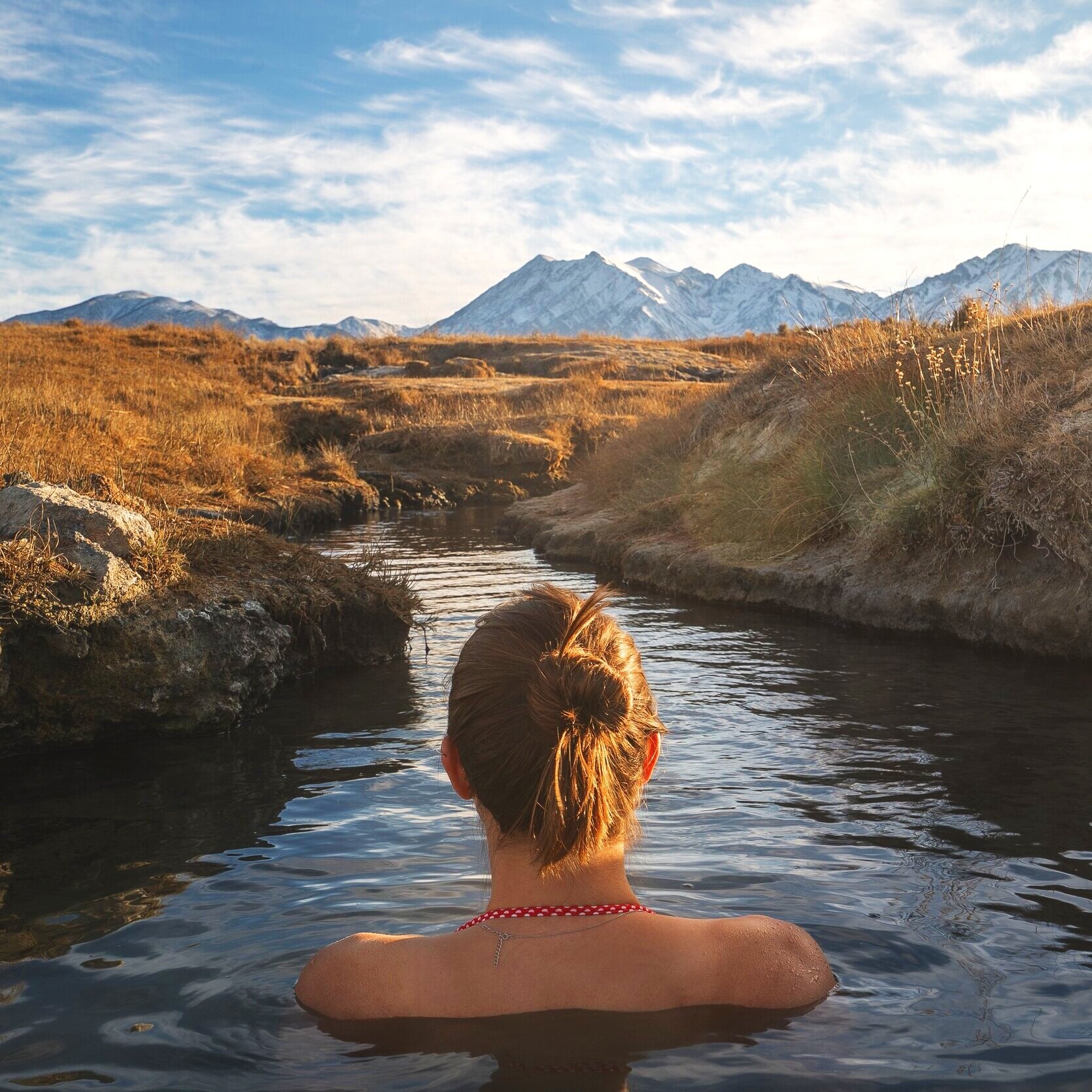Lessons from the clothing-optional hot springs
Until last week at the clothing-optional hot springs, my last opportunity to lie around naked with other people was before Covid. At a swanky spa in Santa Fe, the genders tiptoed discretely in separate spaces. Couples rented private pods.
By comparison, the Orvis Hot Springs in Ridgway, Colorado, is a free-for-all. It’s co-ed. And people opt in or out with whatever combination of towel, wrap or swimsuit they choose. The strictest rule is No Electronic Devices.
When I booked my visit, my beau friend blanched. He said public nudity is nuts. And he’s not a water guy at all. So, I went alone.
As I dipped from pond-to pond, or floated on my back, I forgot all about the male gaze. And the female gaze. Instead, I gazed inward. And I remembered: All my life I’ve loved the feel of swirling water against bare skin.
As a teenager in Miami Beach, I’d stroke far out in the ocean to where nobody could see me, and peel off my suit. I’d swim in circles with half a bikini bunched up in either hand, pretending I was a mermaid from the Weeki Watchee Springs.
Decades later, living on a lake in Central New York, I’d step off my dock into the dark water, wearing nothing, while my kid slept soundly in the house.
The clothing-optional hot springs not only brought memories flooding back. It got me thinking about how much we can learn in such a place—about ourselves and each other. About art. And love. And imperfection.
Here goes.
What’s good for the goose isn’t necessarily good for the gander. While some couples were aligned on the nudity thing, others were not. If one in the pair was bare, usually it was the man (of course). I hoped the robed women felt brave in their modesty—not ashamed—and that there was no private fall-out. But it wasn’t the time to ask.
Eye contact signals respect. Whether people are naked or clothed, we must look them in the eye when we engage in conversation. It’s just gross to do otherwise. People at the hot springs seemed to know that better than anyone.
(Body) art is uncomfortable. I saw some pretty aggressive tattoos and piercings at the hot springs. And the bodies were so very human. But rather than averting my eyes, I discretely studied the designs. There’s value in looking closely at things we don't like or understand. But it’s scary!
We need both fire and ice. Contrast hydrotherapy—alternating, as I did, between the 114-degree lobster pot and the 57-degree cold tub—is good for the body and the brain! It further boosts the immune system. Improves circulation. Heals damaged tissue. As I plunged back and forth, I thought about all the ways life becomes lukewarm and cozy. I vowed to keep seeking sensation, especially at 60-plus.
But alas, the pool party is over.
The beau friend bolted soon after I returned home—for more reasons than just this. He doesn’t read my blog, so he won’t see what I’ve written.
But if he did, he’d know I don’t need a goose who’s exactly like me. He’d know it’s fine to be uncomfortable at least some of the time. And that challenge is what keeps us alive.
He’d know it’s okay to be afraid.






